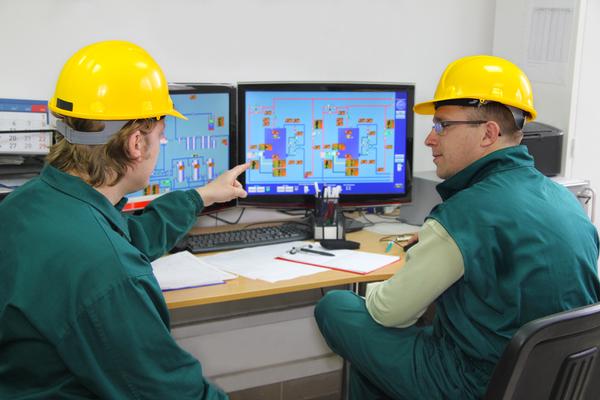Steam is a valuable medium and it is wise to measure its usage, data which can then be used to target plant improvement areas, or for monitoring efficiency.
A statement by Lord Kelvin illustrates this perfectly:
When you can measure what you are speaking about, you know something about it, but when you cannot express it in numbers, your knowledge is of a meagre and unsatisfactory kind.
Why meter steam:
Plant efficiency
A steam flowmeter will indicate process efficiency, steam plant loading capacity, and it will also show the deterioration of plant over time, allowing preventative maintenance to be planned. Establishing peak usage times or identifying sections or items of plant which are major energy users can be very useful. This may lead to a change in production methods for economical energy usage or to ease peak load problems, for example on the boiler plant.
Process control
Steam flow meters can be used to control the rate of increase in flow during start up. They can also be used to balance loads in different boiler plant to ensure that boilers are sequenced properly. An example might be where a biomass boiler is used at a constant output and a steam meter controls the other gas fired boilers to balance the varying steam demand of a process. This is often more effective that controlling boiler sequencing on pressure, and avoids possible carryover by overloading a boiler as demand suddenly ramps up.
Costing and charging
Steam meters can be used to help calculate the production costs of a product. Steam is often sold “over the fence” to another user and steam metering allows the user to be accurately charged for their usage.
The theory stuff:
Accuracy is a measure of a meter’s performance in indicating a correct flowrate value against a ‘true’ value obtained during calibration. The two methods used to express accuracy have different meanings.
Accuracy, actual flow
This is easy to understand. For example: With an accuracy of +/- 3 % of reading and an indicated flowrate of 1,000 kg/h, the ‘uncertainty’ is between 970 and 1,030 kg/h.
Accuracy FSD (Full scale deflection)
This is a common way of stating instrument accuracy, but one which can have implications for real world accuracy. If we use the same example as above, a steam meter with an accuracy of +/- 3 % of FSD, and an indicated flowrate of 1,000 kg/h, the ‘uncertainty’ is between 970 and 1,030 kg/h respectively.
Accuracy compared
However if we look at reduced loads we can see the implications of the different types of accuracy:
Accuracy ± 3% of measured value (reading or actual)
True flow 1,000kg/h = Indicated 1,030 to 970 kg/h
True flow 100 kg/h = Indicated 103 to 97 kg/h
Accuracy Full Scale Deflection (FSD)
True flow 1,000 kg/h = Indicated 1,030 – 970 kg/h
True flow 100 kg/h = Indicated 130 to 70 kg/h
As you can see this gives very different real world accuracy (+-30%). When considering a steam meter it is worth checking which method the manufacture is using to express its accuracy.
Repeatability
This is a way of describing the ability of a flow meter to indicate the same value for an identical flowrate on more than one occasion.
Accuracy vs repeatability? A common question! If you are metering for costing then accuracy is more important. On the other hand, if you are more interested in observing trends then good repeatability is more important than absolute accuracy.
Turndown
Turndown is the term used to express the range of flowrates, over which the flowmeter will work within the accuracy and the repeatability tolerances given.
Types of meters
- Vortex
- Orifice plate
- Ultrasonic
- Turbine
- Pitot Tube
- Inline variable area
Criteria for selecting which type of steam meter:
- Turndown
- Accuracy
- Repeatability
- Pressure drop
- Display unit facilities, and interoperability with other meters and recording systems on site
- Maintenance
- Reliability
- Ease of installation
- And finally, cost!
Where to Meter
Ideally meter each steam boiler so the performance and efficiencies of boilers can be compared. Divide plant into production lines, areas or buildings. Avoid unmetered take-offs upstream of meters and avoid installing meters in series.

